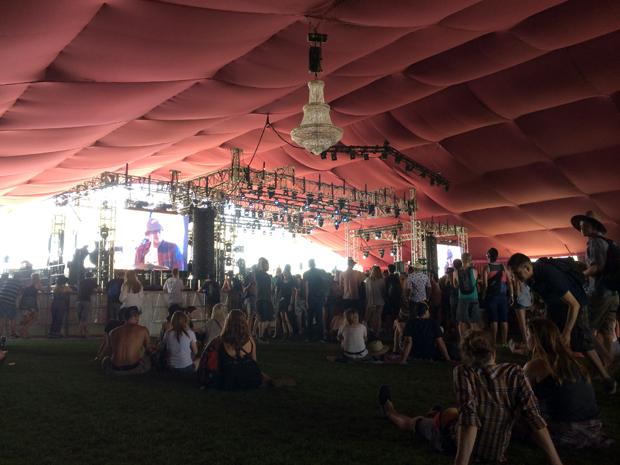Coachella Festival Might Be Love Child of Woodstock
Spring break at Coachella
“Woodstock 2015” shouted the enthusiastic, loosely dressed woman, as she skipped barefoot, crowned in flowers, across the vast festival grounds of the Coachella Valley.
Similar references to the infamous 1969 mother-of-all festivals resounded throughout the first weekend of the Coachella festival that took place the second weekend of April, deep within the Californian desert town of Indio.
This begs the question: is the Coachella festival a reincarnation of Woodstock?
First, the general interpretation of the mythical Woodstock is that the festival was a place of peace and love, packed with anti-war hippies, bands that were the voice of a generation, and, of course, an abundance of narcotics.
At a glance, Coachella seems to have inherited many of these traits, such as the skipping flower child. However, upon closer examination, it is the people attending the festival that ferociously try to turn Coachella into a modern rendering of the Woodstock utopia passed down from earlier generations.
The way many people displayed themselves, with body paintings, flowers and hippie attire, created a clever fusion between the glorified presentations of the anti-Vietnam War movements and contemporary fashion trends.
Also, agreeing with the general picture of Woodstock, clouds of marijuana smoke seemed to emerge from anywhere the eye was allowed to rest. Not to mention the abundance of people that discreetly fumbled with zip lock bags of pills and mushrooms.
Yet, the people that try to recreate Woodstock are lost in the utopian daydream and oblivious to the anarchy that actually occurred. How 400,000 people stormed the fences, overpowered police and created three days of absolute chaos.
Coachella, on the other hand, has established security, medical, environmental and sanitary systems for the almost 100,000 people that attended daily in 2014.
The festival is a haven for not only music enthusiasts who flock to unique performances such as the rockin’ AC/DC comeback, Drake receiving the smooch of the year from Madonna or Muse firing one dollar bills from the confetti cannons. No, Coachella has also been praised by artists such as Kid Cudi who, onstage 2014, said that Coachella is a place to get in touch with oneself.
This proves that Coachella is not like going to a regular concert, and no matter the year or the line-up, iconic events will happen and history will be written.
In a way, one could argue that Coachella is the successful commercialized rendering of festivals with Woodstock characteristics. This means that the only traits they have in common is that they both are huge festivals that will be etched in history.
The use of hippie attire and narcotics during festivals is nothing more than a product of trendsetting predecessors, idealized reminiscing, and increasingly liberal marijuana policies.
Coachella is its own festival in every way. The company in charge of the festivities is striving to create something new, not linger in the past. The reason people might wish it were “Woodstock 2015” is so they can bask in the same light as the hippies of Woodstock.

Rikard Kohler is an international student from Stockholm, Sweden currently majoring in Journalism at Glendale Community College. This is his second semester...

